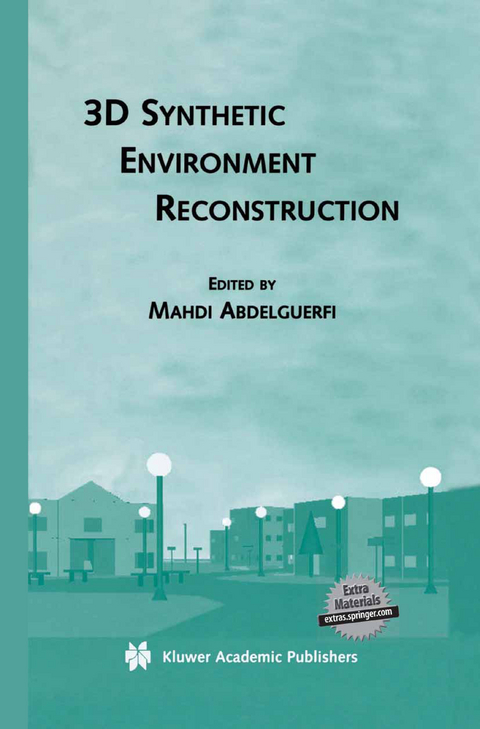
3D Synthetic Environment Reconstruction
Springer-Verlag New York Inc.
978-1-4613-4682-1 (ISBN)
3D Synthetic Environment Reconstruction contains seven invited chapters from leading experts in the field, bringing together a coherent body of recent knowledge relating 3D geospatial data collection, design issues, and techniques used in synthetic environments design, implementation and interoperability. In particular, this book describes new techniques for the generation of Synthetic Environments with increased resolution and rich attribution, both essential for accurate modeling and simulation. This book also deals with interoperability of models and simulations, which is necessary for facilitating the reuse of modeling and simulation components.
3D Synthetic Environment Reconstruction is an excellent reference for researchers and practitioners in the field.
1.- 1. INTRODUCTION.- 2. 3D SYNTHETIC ENVIRONMENT APPLICATIONS.- 3. SYNTHETIC ENVIRONMENT DATA.- 4. THE SYNTHETIC ENVIRONMENT DATABASE GENERATION PROCESS.- 5. SYNTHETIC ENVIRONMENT DATABASE EXCHANGE, RE-USE AND SHARING.- 6. SYNTHETIC ENVIRONMENT VISUALIZATION TECHNOLOGIES.- 7. CONCLUSION.- 8. ACKNOWLEDGMENTS.- 2.- 1. INTRODUCTION.- 2. PRELIMINARIES.- 3. MULTIRESOLUTION MESHES.- 4. SURVEY OF EXISTING MODELS.- 5. CONCLUSIONS.- 3.- 1. INTRODUCTION.- 2. THE VPF+ DATA STRUCTURE.- 3. THE PROTOTYPE.- 4. NRL’S GIDB.- 5. CONCLUSION.- 6. ACKNOWLEDGMENTS.- 4.- 1. INTRODUCTION.- 2. DATA ACQUISITION.- 3. AUTOMATED RECONSTRUCTION.- 4. TEXTURE MAPPING.- 5. CONCLUSIONS AND OUTLOOK.- 5.- 1 INTRODUCTION / PHOTO-REALISTC VISUALIZATION.- 2 VISUALIZATION.- 3 CAPTURING.- 4 CONCLUSION AND OUTLOOK.- 6.- 1. INTRODUCTION.- 2. MODELING REQUIREMENTS FOR A MOBILE AUGMENTED REALITY SYSTEM.- 3. MODELING METHODS.- 4. CONCLUSIONS.- 7.- 1. INTRODUCTION.- 2. DATA SOURCES.- 3. BACKGROUND WORK ON URBAN DATABASE CONSTRUCTION.- 4. MODEL BUILDING STRATEGIES.- 5. SEMI-AUTOMATIC URBAN CONSTRUCTION.- 6. BACKGROUND WORK ON URBAN VISUALIZATION.- 7. REAL-TIME URBAN VISUALIZATION.- 8. CONCLUSIONS.- 9. FUTURE DIRECTIONS.- 10. ACKNOWLEDGEMENTS.
| Reihe/Serie | The Springer International Series in Engineering and Computer Science ; 611 |
|---|---|
| Zusatzinfo | X, 161 p. |
| Verlagsort | New York, NY |
| Sprache | englisch |
| Maße | 155 x 235 mm |
| Themenwelt | Informatik ► Grafik / Design ► Digitale Bildverarbeitung |
| Mathematik / Informatik ► Informatik ► Software Entwicklung | |
| Informatik ► Theorie / Studium ► Künstliche Intelligenz / Robotik | |
| ISBN-10 | 1-4613-4682-7 / 1461346827 |
| ISBN-13 | 978-1-4613-4682-1 / 9781461346821 |
| Zustand | Neuware |
| Haben Sie eine Frage zum Produkt? |
aus dem Bereich


